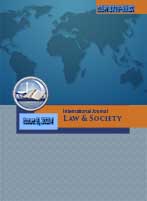Ukrainian Cultural Heritage under Attack by the Russian Federation: Problems of Criminal Law Protection
Keywords:
cultural heritage, cultural property, criminal law protection, armed conflict, Russia’s attack on UkraineAbstract
The article examines the problem of consistency of the provisions of the Convention for the Protection of Cultural Property in the Event of Armed Conflict of 1954, its Protocols and Article 438 of the Criminal Code of Ukraine, analyses the material object and objective features of the crime against cultural heritage committed during an armed conflict.
The disposition of Part 1 of Art. 438 of the Criminal Code of Ukraine, which is the only provision providing for criminal liability for violations defined in many international treaties, is imperfect.
The article argues that prior to Ukraine’s ratification of the Second Protocol to the 1954 Convention in 2020, only open seizure of cultural property in the occupied territory, as well as unjustified damage to certain immovable cultural monuments or repositories of cultural property, could be recognised as a crime against cultural heritage under Article 438 of the Criminal Code of Ukraine.
After the ratification of this international treaty, the acts listed in Article 15 of Protocol II are criminalised. The proper conduct of pre-trial investigation of crimes under Article 438 of the Criminal Code of Ukraine requires investigators to have a thorough knowledge of the provisions of these international treaties.
The article analyses the provisions of the draft new Criminal Code which propose to criminalise war crimes, including encroachment on cultural heritage in the event of an armed conflict. The author proposes to clarify the definition of the material subject of criminal offences against cultural heritage, as well as to supplement the list of criminal offences by bringing them in line with the provisions of international treaties and Ukrainian legislation on the protection of cultural heritage.


